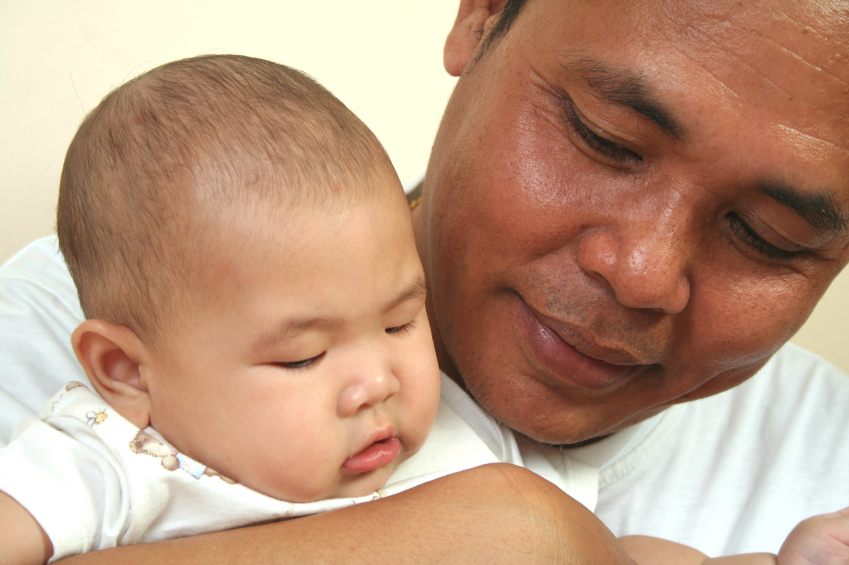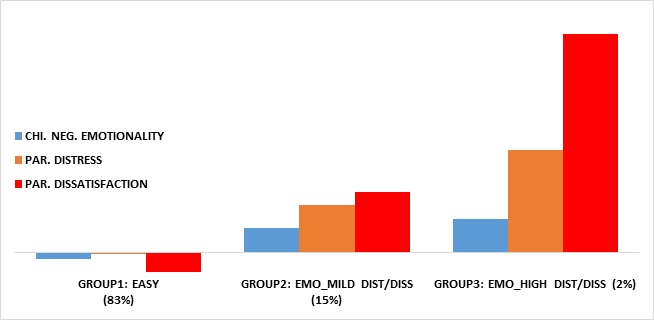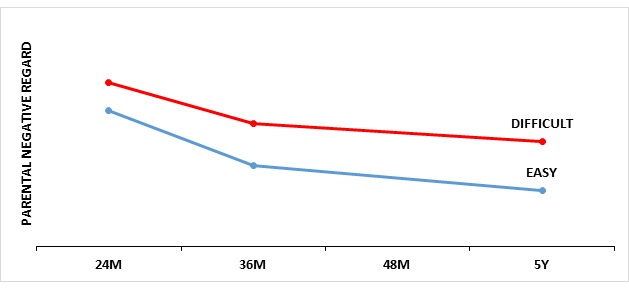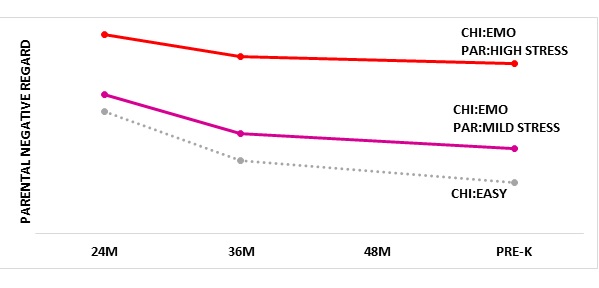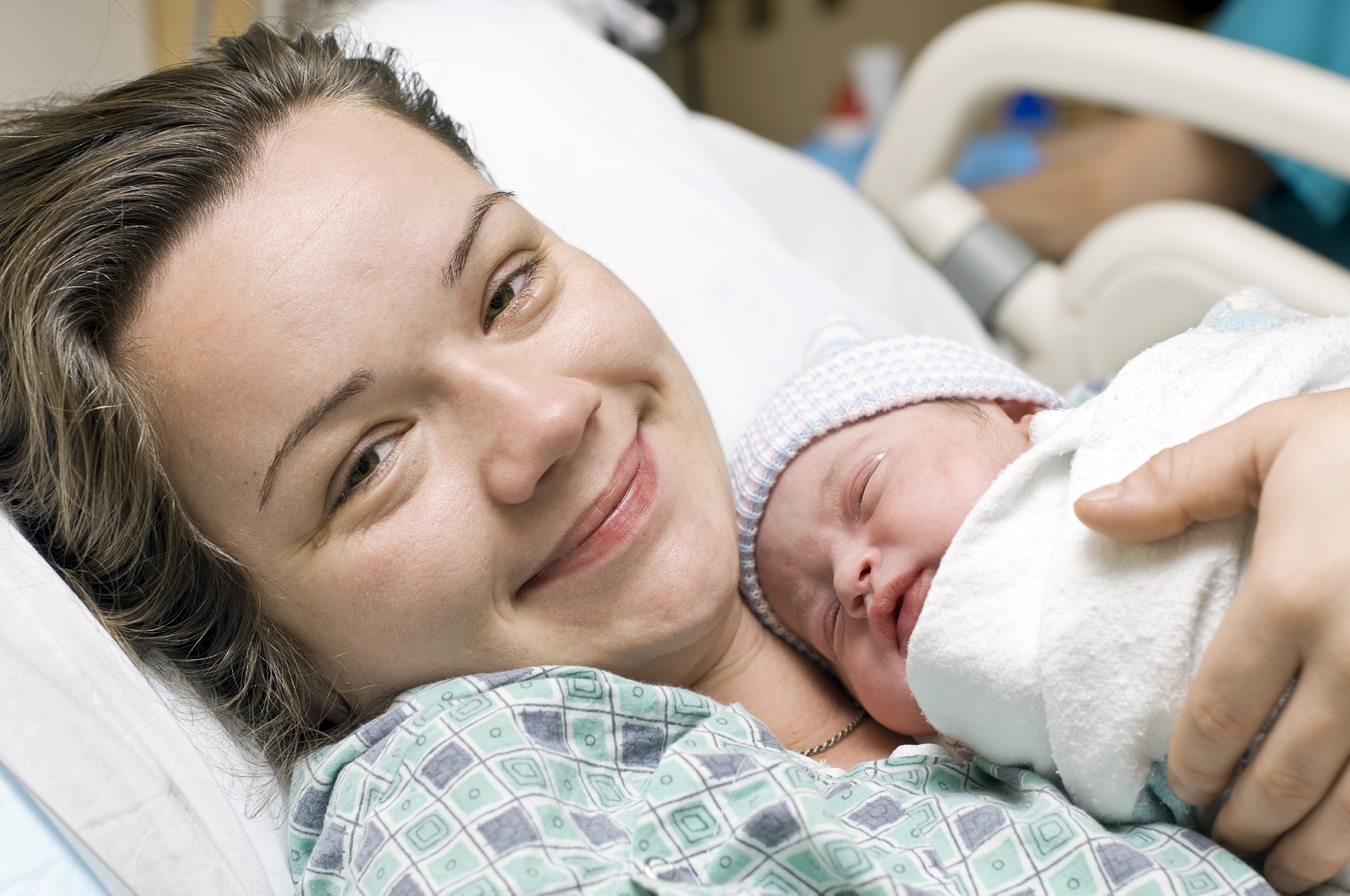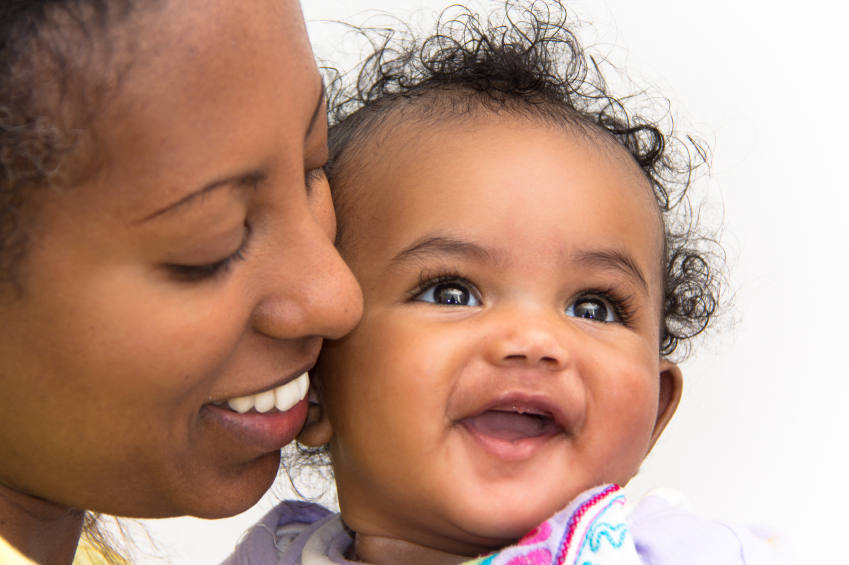Pregnancy has been described as the most difficult period in terms of psychological adjustment for fathers (Condon, Boyce, & Corkindale, 2004; Genesoni & Tallandinin, 2009). Therefore, learning to recognize the importance of their role and ways to engage them during pregnancy into postpartum can be challenging. Early childhood prenatal home visiting programs, in collaboration with the medical model of pregnancy care, can play an important role in supporting fathers.
One reason for fathers’ lack of involvement may be due to perinatal programs, especially in the medical arena, which center on responding to the health needs of the mother–child dyad (Dubeau et al., 2011; deMontigny & Lacharite´, 2012). Fathers report that there are not enough resources to support their education or feelings about fathering (St. George & Fletcher, 2011). Antenatal education’s primary focus is on the mother’s prenatal care and education for labor and birth, casting the father as support person rather than involved as a “triad” in the pregnancy plan of care; it does not address both parents’ transition to the role changes of parenthood (May & Fletcher, 2013; St. George & Fletcher, 2011). For example, one study of fathers who did not meet their partners’ expectations during labor and birth found that one reason cited was they were not prepared for their own distress and did not know how to help themselves (Dellman, 2004). Another study found that some maternity care services viewed fathers as “not-patient and not-visitor” (Steen, Downe, Bamford, & Edozien, 2012) while others found that fathers felt overlooked by staff and that their concerns and emotional needs were often not heard (deMontigny & Lacharite´, 2004). Reasons for this, acknowledged by health care professionals, include staff feeling poorly prepared to meet fathers’ needs (deMontigny, et al., 2011; deMontigny & Lacharite´, 2012; Harvey & Pattison, 2013).
Assessing the psychological well-being of fathers during prenatal health care and diagnosing anxiety and emotional problems among fathers during the perinatal period is also not a common practice (Vreeswijk, Mass, Rijk & van Bakel, 2013). Fathers who experience ongoing mental distress in relation to their parenting roles are less likely to develop and maintain supportive relationships with their partner, and thus are less likely to positively engage with the roles and responsibilities of fatherhood, which may disrupt the development of the father-child attachment relationships (Fletcher, 2011). A study of teen fathers found unrecognized psychological symptomatology of anxiety and depression, suggesting they require services as well as the mothers (Quinlivan & Condon, 2004). Fathers who reported more symptoms of depression or anxiety were found to generally have poorer quality of attachment toward the unborn baby (Vreeswijk, Maas, Rijk & Van Bakel, 2013). These studies support others that suggest that mental health screening of fathers during the perinatal period would be beneficial (Field, Diego, Hernandez-Reif, et al., 2006).
Although the majority of fathering studies have focused on the postpartum period, some are now addressing fathers’ changing sense of identity and paternal-fetal attachment during pregnancy, and suggest that some forms of intervention can effectively promote paternal mental health during this time (deMontigny et al., 2006 a, 2006b; 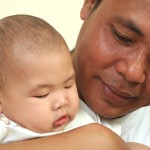 deMontigny and Lacharite´, 2008). Professional awareness of the father’s involvement during pregnancy and his transition to parenthood can create opportunities to provide education and social support (Everett, Bullock, Gage, et al. 2006; Fletcher, May, & St. George, 2014) that may improve outcomes for the family (Alio, Lewis, Scarborough, Harris & Fiscella, 2013).
deMontigny and Lacharite´, 2008). Professional awareness of the father’s involvement during pregnancy and his transition to parenthood can create opportunities to provide education and social support (Everett, Bullock, Gage, et al. 2006; Fletcher, May, & St. George, 2014) that may improve outcomes for the family (Alio, Lewis, Scarborough, Harris & Fiscella, 2013).
Engaging Fathers
It has been suggested that a father’s commitment to his unborn baby can be measured through the effect that his behavior has on the health and well-being of the mother (Feltcher, et al., 2014). As much as possible, it is helpful to assess the fathers support by planning home visits when he is home. This helps him know that his presence and feelings are equally important. Use eye contact, directing questions to both the father and the mother. Ask how he is doing and his feelings about the unborn baby. Encourage fathers to attend prenatal visits with the mother if she is open to this. If her relationship with the father is strained, explore what she would be comfortable having a home visitor share, if anything, to help involve her partner.
The emerging field of research on fetal competencies can be a guide for home visitors to engage fathers and provide antenatal education. One study found that the quality of the fathers’ thoughts and feelings about the unborn baby were more important in shaping their representations of the baby than the amount of time spent on thinking about the baby (Vreeswijk & colleagues, 2013). Learning that the unborn baby has the ability to hear by the second trimester and that he/she recognizes the father’s voice can be a powerful motivator to engage him in interacting with the baby during pregnancy, supporting the idea that the unborn baby “already knows him” (O’Leary & Parker, 2009). Encourage fathers to find a book to read to the unborn baby at night, sharing that the baby will then recognize his voice postpartum. Above all, regardless of how active the father might be, let the father know that the baby has an awareness of his voice. When he interacts with the mother he is also interacting with his baby.
Fathers also need to learn that the unborn baby can sense someone’s touch as different from the mother’s. Often when the baby moves he/she stops when the dad puts his hands on the mother’s abdomen. Fathers need to be encouraged talk to the baby with simple words such as “this is your dad,” to wait a few seconds after which the baby will often respond with movements. This will help the baby become more real to a father.
Fathers can also learn the importance of supporting the mother to rest. Discuss tasks he might take over to help the mother find more time to rest, such as grocery shopping, cooking, or caring for older siblings. Teach him that resting helps increase the amniotic fluid around the baby. The amniotic fluid is important for lung development as the baby practices breathing patterns in the uterus when swallowing and peeing the fluid. In a real sense both parents hear the message that resting is “feeding the baby” during pregnancy. When the mother breathes, her abdomen is moving the uterus up and down; a behavior that can be translated to parents as “rocking the baby” during pregnancy. Fathers can learn that after birth, holding the baby in a flex position in their hands close to their chest simulates the same rocking the baby felt inside the mother. Now it’s the father’s turn “to hold the baby” close, something all newborns need in the first months.
Partners’ support is also important for breastfeeding as breastfeeding is most successful when the mother has adequate support, and fathers’ support can be the difference in how long a mother nurses. The State of Kentucky initiated a campaign (Kentucky Dads Support Breastfeeding) that offers helpful tips for dads to support breastfeeding including ways to support the mom, such as helping with positioning and burping the baby after feedings (The Nations Health, 2015, p.9).
A father’s internal working model of attachment and representation of ‘mother’ and ‘father’ are to some extent socially shaped (Condon, Corkindale, Boyce, & Gamble, 2013). It is important to explore what fathering means to him; his relationship with his father; what behaviors he wants to keep and what he wants to change for his baby. Offering a discussion to identify and interpret infant communication, and to explore issues of why babies cry and strategies to employ when feeling overwhelmed can be helpful in identifying areas that may interfere with a partnership in parenting (May & Fletcher, 2013). This will help open the topic of family of origin views on discipline and “spoiling a baby” messages from both parents.
Unexpected Outcomes
It is not just fathers in a low-risk pregnancy whose needs must be recognized but fathers who experience an unexpected outcome. Fathers of preterm babies have also reported lack of support and recognition during the crisis of the labor and birth experience (Harvey & Pattison, 2013; Hugill & Harvey, 2012). Fathers of infants who die have been described as “the forgotten bereaved” (Armstrong, 2001; Côté-Aresenault & O’Leary, 2015; McCreight, 2004; Murphy, 1998; O’Leary & Thorwick, 2006, a & b; O’Leary, Thorwick, & Parker, 2012). During these medical situations, the health care providers’ focus is primarily on the mother and baby’s health, often unintentionally neglecting the needs of the father. In both situations the fathers report feeling helpless and left alone (Hugill & Harvey, 2012; O’Leary & Thorwick, 2006, a & b). Fathers, by default, assume the role of the support person as they become the messenger to family and friends while worrying about the health of the mother and baby. When there is a perinatal loss, the father often has the primary role of informing others about the loss, making the funeral arrangements, and coping with siblings at home. By holding back their own emotions to support the mother and siblings, processing their own trauma can be jeopardized (O’Leary, Thorwick & Parker, 2012).
An unexpected outcome of pregnancy occurs in the medical setting but it is when parents return home that healing begins. A home visitor plays an important role as parents move back into their communities, now profoundly changed people with the trauma of the birth of a preterm baby or perinatal loss embedded in their memory. Parents are rarely given resources at the hospital on how to support children at home and, in their own grief, do not know how to cope themselves (O’Leary, 2007). Providing developmentally appropriate resources for the children can be invaluable to parents (see resources for children’s books).
Most parents want to share what happened so it is important to not be afraid to ask about the story. Parents’ need a listening ear and will often replay the trauma many times over the months. The home visitor may be the first person to ask the father’s viewpoint as most people ask how the mother is doing but not the father (O’Leary & Thorwick, 2006b). Asking about a missing baby can be very healing for families. Parents want all their children, living and deceased, recognized and will want and need to talk about this.
Pregnancy Following Loss
In a pregnancy that follows loss, fathers have a different understanding of an unborn child and prenatal attachment, realizing this may be the only time they have with the baby (O’Leary & Thorwick, 2006 a & b; 2008). Some fathers embrace their parental identity prenatally with more involvement, attending antenatal visits to get as much information as they can. Others avoid prenatal visits and some won’t even drive by the hospital where the death occurred. It is common for fathers to become vigilant about fetal movement, asking the mother many times a day if the baby is moving. It is crucial to assess how and where fathers are getting support for themselves. In an effort to protect the mother, who is often the father’s primary source of support, the father will acknowledge holding back his fear and anxiety that the new baby could die (O’Leary & Thorwick, 2006b). Pregnancy for both parents becomes a complex journey of grieving for one baby while trying to attach to a new unborn baby (O’Leary, et al., 2012).
Education about fetal competencies to help support attachment to the new baby becomes an important intervention to facilitate fathers engaging prenatally. This provides concrete information to help fathers begin connecting with the new unborn baby while also reinforcing the idea that the deceased baby knew him as his/her parent as well. Their parenting role — and continued bond and attachment to a deceased baby — does not go away just because they are in a new pregnancy (O’Leary, et.al., 2012). This prenatal education also can help individualize the two babies as separate people, and will be reinforced again when the new baby is born alive.
Fathers need labor and birth preparation for a new baby, too. The previous birth that resulted in death can bring symptoms of post-traumatic stress, often heightened for a father who felt helpless to protect the mother and baby (O’Leary, et. al., 2012). At a minimum, touring the birthing area of the hospital can help both parents know what might trigger memories and prevent symptoms of PTSD (Côté-Arsenault & O’Leary, 2015). They need to experience the space, the smells, the sounds — anything that may trigger flashbacks to the previous birth. They then can write a birth plan that reflects what they may need for support (O’Leary, et al, 2012). This helps give parents some control to be more fully present for the birth of the new baby.
After the baby is born, demonstrating newborn competencies (Nugent, 2015) to all fathers is a wonderful way to engage men who may not have been invested during pregnancy. If the father has been actively involved, the baby will know his voice and turn to his face. Most important for fathers who have experienced a previous loss, this will show  that the baby is alive, healthy and a different baby. In the cases of loss, be aware a new layer of grief will surface because the deceased baby may be heavy on a father’s mind. The full impact of what he lost in the death of that baby will be seen in the healthy development of the subsequent baby (O’Leary, 2004).
that the baby is alive, healthy and a different baby. In the cases of loss, be aware a new layer of grief will surface because the deceased baby may be heavy on a father’s mind. The full impact of what he lost in the death of that baby will be seen in the healthy development of the subsequent baby (O’Leary, 2004).
Summary
Prenatal infant mental health programs are an important resource to engage fathers and work alongside the medical community in meeting the needs of all childbearing families. Using what home visitors have done for years needs to be translated into intervention for fathers too. Helping fathers recognize their important role in the relationship with the mother and baby can build stronger, healthier families.
References
Alio, A., Lewis, P., Scarborough, K., Harris, K., & Fiscell, K. (2013). A community perspective on the role of fathers during pregnancy: a qualitative study. BMC Pregnancy and Childbirth, 13:60.
http://www.biomedcentral.com/1471-2393/13/60
Armstrong, D. (2001). Exploring fathers’ experiences of pregnancy after a prior perinatal loss. Maternal Child Nursing, 26(3), 147-153.
Condon, J., Corkindale, C., Boyce, P. & Gamble, E. (2013). A longitudinal study of father-to-infant attachment: antecedents and correlates. Journal of Reproductive and Infant Psychology, 31(1), 15-30.
Côté-Arsenault, D. & O’Leary, J. (2015). Understanding the Experience of Pregnancy Subsequent to Perinatal Loss. In: Wright, P., Limbo, R., & Black, (Ed.), Perinatal and Pediatric Bereavement, Chapter 10; 169-181. Springer Publishing, NY, NY.
Dellman, T. (2004). ‘The best moment of my life’: a literature review of Fathers’ experience of childbirth. Australian Midwifery Journal of the College of Midwives 17 (3), 20–26.
Dubeau, D., Devault, A. and Forget, G. (2009). Fatherhood in the 21st century. Quebec, University Press.
deMontigny, F.,Lacharite´ , C.,2004. Fathers’ perceptions of the immediate post-partal period: what do we need to know? Journal of Obstetric, Gynecologic, and Neonatal Nursing, 33:328–340.
deMontigny, F.,Lacharite´ , C.,Devault,A.,(2012). Transition to fatherhood: modeling the experience of fathers of breast fed infants. Advances in Nursing Science,35, E11–E22.
deMontigny, F., Girard, ME Lacharite, C., Dubeau, D., & Devault, A. (2013). Psychosocial factors associated with paternal postnatal depression. Journal of Affective Disorders, 150(1):44-9. http://dx.doi.org/10.1016/j.jad.2013.01.048
Erlandsson K, Linder H, Haggstrom-Nordin E (2010) Experiences of gay women during their partner’s pregnancy and childbirth. Br J Midwifery 18(2): 99–103.
http://www.magonlinelibrary.com/doi/abs/10.12968/bjom.2010.18.2.46407′)
Everett, K., Bullock, L., Gage, J., Longo, D., Geden, E. & Madsen, R. (2006) Health risk behavior of rural low-income expectant fathers, Public Health Nursing 23(4): 297–306.
Field, T., Diego, M., Hernandez-Reif, M., et al., 2006. Prenatal paternal depression. Infant Behavior and Development 29, 579–583.
Fletcher, R., Bimpani, G., Russell, G., & Keating, D. (2008). The evaluation of tailored email and web-based information for new fathers. Child Care Health & Development, 4(4), 439-446.
Fletcher, R. (2011). The Dad Factor: How Father–Baby Bonding Helps a Child for Life. Finch Publishing, Warriewood, NSW.
Fletcher, R., May, C. & St. George, J. (2014). Fathers’ prenatal relationship with ‘their’ baby and ‘her’ pregnancy—implications for antenatal education. The International Journal of Birth and Parent Education, 1(3), 23-27.
Habib, C. & Lancaster, S. (2006). Transition to Fatherhood: Identity and Bonding in Early Pregnancy. Fathering, 4(3), 235-253.
Hugill, K. & Harvey, M. (2012). Fatherhood in Midwifery and Neonatal Practice. Quay Books. London.
May, C & Fletcher, R. (2013) Preparing fathers for the transition to parenthood: Recommendations for the content of antenatal education. Midwifery 29 474–478.
McCreight, B. S. (2004). A grief ignored: Narratives of pregnancy loss from a male perspective. Sociology of Health and Illness, 26(3), 326-350.
McElligott, M. (2001). Antenatal information wanted by first-time fathers. British Journal of Midwifery, 9:556-558.
Murphy, F. (1998). The experience of early miscarriage from a male perspective. Journal of Clinical Nursing, 7(4), 325-332.
Nugent, K. (2015). The newborn behavioral observation (NBO) system as a form of intervention and support for new parents. Zero to Three, 36(1), 2-10.
O’Leary, JM (2004). Grief and its impact on prenatal attachment in the subsequent pregnancy. Archives of Women’s Mental Health, 7(1), 7-18.
O’Leary, J. & Thorwick, C. (2006a). When pregnancy follows a loss: Preparing for the birth of your new baby. O’Leary, JM. Minneapolis, MN
O’Leary, J., & Thorwick, C. (2006b). “It affects me too.” Fathers experience in a pregnancy after loss. Journal of Obstetrics, Gynecologic, and Neonatal Nursing, 35(1), 78-86.
O’Leary, J, & Thorwick, C. (2008). Attachment to the Unborn Child and Parental Representation of Pregnancy Following Perinatal Loss. Attachment: New Directions in Psychotherapy and Relational Psychoanalysis, 2(3), 292-320.
O’Leary, J (2007) Pregnancy and Infant Loss: Supporting parents and their children. Zero to Three, 27(6), 42-49.
O’Leary, J. & Parker, L. (2009). Parenting your baby before birth: Explore the relationship. Thorwick, C. (Ed.) Minneapolis, MN. Self published: O’Leary
O’Leary, J., Warland, J. & Parker, L. (2012). Childbirth Preparation for Families Pregnant After Loss. International Journal of Childbirth Educations, 27(2) 44-50.
O’Leary, J. & Thorwick, C., Parker, L. (2012). The baby leads the way: Supporting the emotional needs of families’ pregnant following perinatal loss. 2nd edition Ragland, K. (Ed.) Minneapolis, MN Self published: O’Leary.
Available at aplacetoremember.com
Quinlivan, J. & Condon, J. (2005). Anxiety and depression in fathers in teenage pregnancy. Australian & New Zealand Journal of Psychiatry, 39:915-920.
Ramchandani, P., Stein, A., Evans, J., et al., 2005. Paternal depression in the postnatal period and child development: a prospective population study. Lancet 365, 2201–2205.
Ramchandani, P., O’Connor, T.G., Evans, J., et al., 2008. The effects of pre- and postnatal depression in fathers: a natural experiment comparing the effects of exposure to depression on offspring. Journal of Child Psychology and Psychiatry 49, 1069–1078.
Ramchandani, P.G., O’Connor, T.G., Heron, J., et al., 2009. Depression in men in the postnatal period and later child psychopathology: a population cohort study. Journal of the American Academy of Child Psychiatry 47, 390–398.
Ramchandani, P.G., Psychogiou, L., Vlachos, H., et al., 2011. Paternal depression: an examination of its links with father, child and family functioning in the postnatal period. Depression and Anxiety 28, 471–477.
Skari, H.,Skreden,M.,Malt,U.F.,etal.,2002.Comparative levels of psychological distress, stress symptoms, depression and anxiety after childbirth—a prospective population-based study of mothers and fathers. BJOG: An International Journal of Obstetrics and Gynaecology109,1154–1163.
The Nations Health: A publication of the American Public Health Association, May/June, p. 9, www.thenationshealth.org
Vreeswik, C., Mass, J., Rijk, C., van Bakel, H. (2013). Fathers’ experiences during pregnancy: Paternal prenatal attachment and representations of the fetus. Psychology of Men & Masculinity 15(2):1-9. DOI:10.1037/a0033070
Resources http://www.beyondblue.org.au/resources/for-me/men/what-causes-anxiety-and-depression-in-men/new-fathers
Resources for children: http://www.aplacetoremember.com or http://www.centering.com

